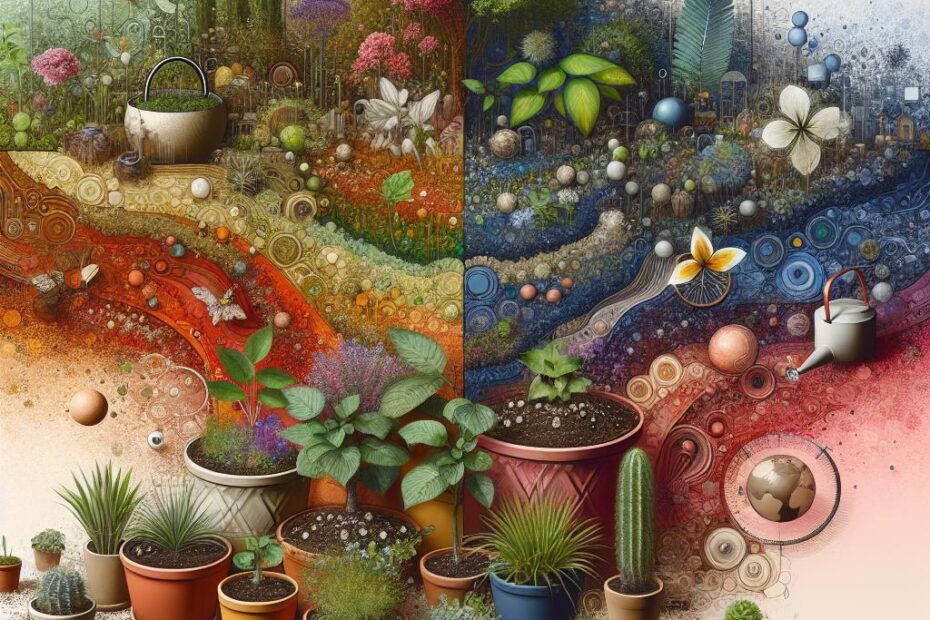In the world of gardening, the type of soil you use can make a big difference in the health and success of your plants. Two common types of soil that you may come across are garden soil and potting soil. While both are used for planting, there are some key differences between the two. In this article, we will explore the distinctions between garden soil and potting soil, their unique characteristics, and the best ways to use them for your gardening needs.
Differences Between Garden Soil and Potting Soil
-
Ingredients
- Garden soil is the natural soil found in your garden or yard. It is typically a mixture of topsoil, organic matter, sand, and clay.
- Potting soil, on the other hand, is a man-made mixture that is specifically designed for container plants. It often contains a blend of peat moss, perlite, vermiculite, and other additives to provide the optimal growing environment for potted plants.
-
Drainage
- Garden soil tends to be heavier and more compact, which can lead to poor drainage in containers. This can result in waterlogged soil and root rot for potted plants.
- Potting soil is formulated to promote good drainage, allowing excess water to flow through the container easily. This helps prevent waterlogging and ensures that your plants’ roots have access to the oxygen they need.
-
Nutrients
- Garden soil may be nutrient-rich, but the levels of nutrients can vary depending on the location and condition of your garden soil. It may require additional fertilization to meet the needs of your plants.
- Potting soil is usually enriched with nutrients such as nitrogen, phosphorus, and potassium to support healthy plant growth. This ensures that your potted plants have access to the essential nutrients they need to thrive.
-
Sterility
- Garden soil may contain weed seeds, pests, and diseases that can harm your plants. It is important to sterilize garden soil before using it in containers to prevent these problems.
- Potting soil is typically sterile, which helps prevent weed growth and reduces the risk of pests and diseases affecting your plants. This makes it a safer option for container gardening.
Benefits of Using Garden Soil and Potting Soil
-
Garden Soil
- Rich in natural nutrients
- Supports beneficial microorganisms
- Cost-effective for large planting areas
-
Potting Soil
- Lightweight and easy to handle
- Promotes good drainage and aeration
- Sterile and free of pests and diseases
Practical Tips for Using Garden Soil and Potting Soil
- Mix garden soil with compost or organic matter to improve its nutrient content.
- Choose a high-quality potting soil that matches the needs of your plants (e.g., cactus mix for succulents).
- Use garden soil for outdoor beds and potting soil for containers and indoor plants.
- Consider adding a slow-release fertilizer to potting soil for long-term plant health.
Case Study: Garden Soil vs. Potting Soil
In a side-by-side comparison, a gardener planted the same type of flowers in garden soil and potting soil. The flowers planted in garden soil struggled due to poor drainage and compacted soil, while the flowers in potting soil thrived with healthy growth and vibrant blooms. This highlights the importance of using the right soil for your plants to ensure their success.
First-hand Experience: Choosing the Right Soil
As a seasoned gardener, I have found that using the appropriate soil for each planting situation is crucial for the health and growth of my plants. I have seen firsthand the difference that using potting soil can make for container plants, providing them with the ideal conditions for thriving. By investing in high-quality potting soil, I have been able to achieve beautiful and healthy plants year after year.
In conclusion, while garden soil and potting soil may seem similar at first glance, they serve different purposes and offer unique benefits for gardeners. Understanding the differences between the two can help you make informed choices for your gardening projects. By using the right soil for each situation, you can provide your plants with the best possible growing environment and set them up for success. So, whether you’re planting a garden bed or filling a container, choose the soil that suits your needs and watch your plants flourish.
